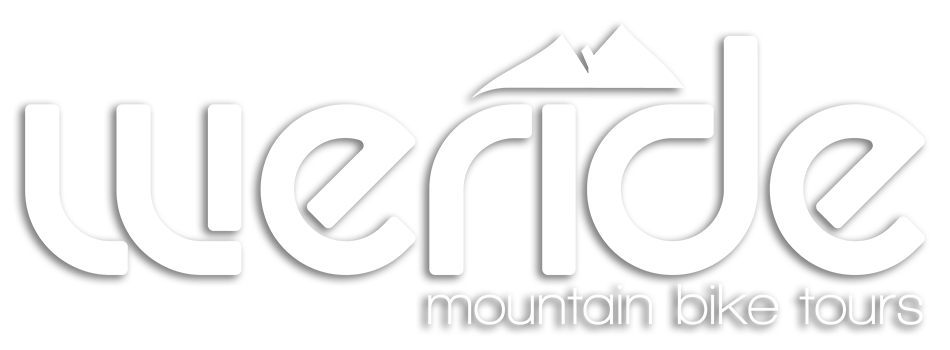What is the E-MOUNTAINBIKE City Escape series?
E-MOUNTAINBIKE City Escapes powered by Haibike visit the world’s most exciting cities to bring you inspiration, insider info and the best tips and tours. In cooperation with Haibike, our goal is to inspire a new generation of riders to embrace a new lifestyle and opportunities. We explore the world’s cities with a different perspective to find the most exciting opportunities to experience them – whether you’re a tourist or a local!
Each E-MOUNTAINBIKE City Escape guide aims to inspire you in its own way. Get to know new facets of major cities, eat at interesting restaurants and discover the best-kept insider secrets: the local language and slang, dos and don’ts, cafes, bars, restaurants, bike shops and of course, GPX files of the best routes to explore. With every City Escape we also present the bikes that we used to get around.
Dive into the following three chapters:
1/3 A city of explorers: Somewhere between Vasco da Gama and overtourism
1. The city of explorers – In turbo mode between Vasco da Gama and overtourism
A ship’s horn blows in the distance. Seagulls circle in the sky. An aeroplane flies over an apartment block. The warm sun dazzles us and covers the city in a warm glow. Where the Iberian Peninsula meets the sea, these are the scenes of a normal winter’s day. We’re in Lisbon! A metropolis with many names and an even richer history. The city of seven hills. The city of light. Or simply, currently the hippest capital in Europe.
The iconic Ponte bridge has often caused confusion on Instagram. Due to its similarity with the Golden Gate Bridge, it’s easy to mistake Lisbon for San Francisco in photos. The Jesus Cristo Rei statue towering on the opposite bank only adds to the confusion, leaving you thinking you might have landed in Rio De Janeiro. With its antique tramway, narrow streets and ornate and often colourfully tiled facades, Lisbon has a unique charm that’s so romantic it could have been taken straight from every globetrotter’s dream of the real and authentic. And it is, at least in winter. In peak season, the reality is different: crowded trams, hectic conversations in the hustle of the streets, tourists outnumbering the locals.
“Although Lisbon has so much more to offer than your standard tourist traps, a typical tourist’s itinerary often consists only of Tram 28, the historic elevator de Santa Justa and pastéis de nata.”
Like most hip holiday hotspots of today, Lisbon is defenceless against overtourism and gentrification. The problem in Lisbon is that it fosters inequality. While cafes, restaurants and accommodations seem inexpensive to tourists, life for the citizens of Lisbon, with an average gross income of around € 1,500 per month, is becoming less and less affordable. The result? Just as apartments in the hip districts of Berlin are being snapped up by well-off buyers, foreigners buy up properly in Lisbon’s centre and inflate the rent, making it unaffordable for most Portuguese citizens. Sadly, that means the population of locals is dwindling in the city centre. Fortunately, the purpose of our City Escapes is to escape stress, mass tourism and your standard tourist itinerary to instead find the city’s authentic moments.
Lisbon is a small city with a rich history. In 1498 Vasco da Gama set sail from here to discover the maritime route to India, setting the foundation for the Portugese colonisation in the Americas,, Africa, Southeast Asia, India and Chin. As the first empire in the world and the longest-lasting colonial empire in Europe, entire countries such as Brazil, Mozambique or Angola were occupied by the Portuguese. There, they dug for gold, traded spices and, above all, expanded their reign. They also brought back seeds and plants, whose descendants now provide shade in the Jardim Botânico Tropical, which was founded in 1906. Now, only the coat of arms, Fado music and monuments tell of the city’s and country’s former glory.
Inspired by the city’s spirit of discovery, for this E-MOUNTAINBIKE City Escape we swap ships for bikes, conquering Lisbon aboard Haibike’s brand new Xduro and Sduro, both powered by Bosch’s Performance CX motor. We admit we didn’t stay completely dry when we crossed the Tagus by water taxi and lost our bearings in the city’s clubs a few times… In Lisbon, timing is everything. You’ve got to be with the right people, at the right time, in the right place. As we explore the city, we meet with locals and incomers alike to find its hidden treasures, ride trails with the local guiding crew, WERIDE and surf with legends.
With a population of around 500,000, the city attracts more than 4.5 million sweaty visitors a year, shoving each other through the narrow streets at a sweltering 40° C. If you live here, you’re outnumbered. However, the city comes to rest in winter as very few people find their way to Portugal’s capital during the “cold” months from November-February. This undoubtedly makes it the best time to see the capital, its museums, parks and trails. With average temperatures ranging between 12-14 ° C, predominant sunshine and a low chance of rain, you’ll only have to contend with the locals. Not far away, surrounded by a fairytale forest, Sintra with its old palaces and ancient relics is much more pleasant to see in the off-season too. Instead of waiting in the blazing summer heat for what feels like hours to board a train from Lisbon to Sintra or visit one of the pompous palaces, you’ll never have to queue for more than two minutes in winter.
So what exactly distinguishes Lisbon from other European capitals and what makes it such an unforgettable city escape? The mild weather, the extraordinary hills of the city, the varied trails and the sea offer something for everyone. You can do it all in Lisbon. Just outside (or even in) the city, you’ll find places to surf, kite, bike, skate, paraglide or just go hiking. Just take Monsanto park, which is easily accessible and full of short but sweet trails that the locals look after and maintain. If you prefer to stay in the city, you won’t be short of impressive views, authentic restaurants, Fado, old-fashioned trams, custard tarts and colourful azulejos, the colorful ceramic tiles adorning many of Lisbon’s buildings. Life is literally waiting on your doorstep and thanks to its manageable size, Lisbon, shortened LX, feels more like a big village, where you can experience everything within walking distance.
Lisbon embraces slow food wholeheartedly, offering cuisine that is like grandma’s best home-cooked food and defiantly opposing big chains. With freshly caught fish or meat available everywhere, this is an intrinsic part of Lisbon’s identity. You won’t find run-of-the-mill food-chains here, though, admittedly, there’s still no escaping McDonalds. But in the city’s small Tascas, the TV’s are always on, the neon lights set the mood and you can eat a lot for a little. Popular dishes include caldo verde (cabbage soup), grilled sardines and anything with lots of fish, meat, mussels or crabs. Even vegans and vegetarians will find something to eat. Developing rapidly over the last few years, you’ll find new, hip restaurants popping up in the city’s old facades almost every day.
With the 7 hills at our front door, the ocean behind us and the sun in our faces, there was nothing to stop us from turning on our bikes and heading out to explore the area. As luck would have it, Julian, our art director knows his way around Lisbon, seeing as the city has been his winter escape for two years now. We conquered the city together with him, his dad and João Mourão, a local and founder of WERIDE.
Dive into the following three chapters:













